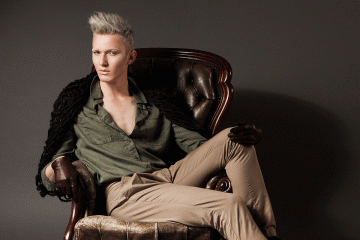Just How to Master Product Photography
What we're talking about
Product photography, or shopping photography as it's sometimes known, is basically what it sounds like: pictures taken as well as utilized on internet sites as well as social media platforms to aid drive sales of your services or product. Given the increase of buying online, the selection of items and brand names readily available to customers in any provided classification can be substantial-- meaning the pictures that highlight what you're marketing and also why it's worth buying are a basic element for any business selling online.
Why it is essential
There's far more to product photography than revealing potential clients what your product appears like. Well-considered images can place your product in context, aiding a client see how it may fit into their own life. Actually, scientists found that vivid and also thorough images of a product boosts a client's emotional sense of ownership of that product. Photography can likewise help improve your brand name, strengthening what you stand for and what you're everything about. All of these points increase the probability of motivating a acquisition.
Taking photos that give context and construct your brand does not always need a lot of elegant tools or a expert photographer-- though those two things can aid. You simply require to think through your objectives when it comes to photography and also invest some time and also power into bringing those concepts to life.

Things to keep in mind
Different kinds of pictures serve different purposes. One photo does not fit all. For simply one product you could require a number of pictures: typical product shots on a white history to make use of on industries; branded product shots to make use of by yourself site or social channels; lifestyle shots that reveal the product being used or in an aspirational setup; detail shots that record crucial elements or attributes you intend to highlight; and also behind-the-scenes photos that capture the procedure behind the product.
Focus on your illumination. Lights, not the camera, is what will make or break an image. If you don't have a lot of fancy equipment, you're going to want to work with natural illumination, so locate a place near a big window to fire as well as wait till the brightest time of day. Diffused lights ( also known as soft and also even) is the goal, and also to stay clear of extra-bright places or super-dark shadows you can use white foam board from your neighborhood art shop to mirror light onto your product.
Consistency is key. To see to it all your items are connected with your brand, see to it the method you photograph them is relatively consistent. All your product photos must be shot from the same angle and range, and all way of living shots ought to have a similar tone and colour palette. Think of what you want to achieve below, as well as once you manage it, try to ensure other photos you take in the future look similar.
You don't require a professional to take professional shots. Certain, a elegant DSLR video camera as well as experienced eye will certainly make obtaining attractive product images much easier, yet you can still get to a excellent area doing it on your own with a little interest to detail and some standard tools. Make use of the best cam you have handy (this could be on a smartphone, which is entirely fine), a tripod to keep points consistent, some basic poster board or large sheets of paper to make use of as backdrops as well as white foam board to diffuse and also you'll be a in a decent starting setting to get some excellent shots.
How to fire pictures of your product
1. Make a mood board. Don't avoid this action. Take some time to collect photos that record the look and feel you intend to duplicate in your photos. Study the angles my website made use of, the props ready and also the colours and tones of the photos that inspire you and also try to find patterns in things you're drawn to. The notes you make right here will certainly assist you choose what to go with when styling and firing your own photos.

2. Determine what you require. Make a listing of all the images you want for each and every product. At minimum, this should possibly include a few straightforward product shots (that show the item from different essential angles) on a neutral background; some even more enjoyable product shots that straighten better with your brand name; and way of living shots to put the product in context for your consumer.
3. Set the scene. Perfect your established on shoot day. Select a time of day when you have accessibility to all-natural light and also established your place (maybe a table near a big home window) with history documents and props as required. You can utilize Blu Tack or tape to keep things in position-- require time to make sure the set-up helps your photos.
4. Take and retake photos. Time to fire! It will probably take several shots to obtain the shot exactly right, so do not be afraid to take multiple images of the same arrangement at the exact same angle. Ensure to stop and also check to see what the photos appear like and also focus on the details. Is the illumination also or are any type of essential features covered by darkness or highlights? Are there any interruptions within your framework that might not have the ability to be modified or chopped out later? Make certain you catch all the shots you noted out when intending your photoshoot.
5. Make edits and also choices. Experience all the photos you took as well as pick a couple of photos of each kind for each product that work the very best. Narrow down the ones you intend on utilizing to display your product online, then make edits to help all the pictures look regular. Again, no professional abilities needed-- standard software application on your phone or computer system can assist chop out distracting components as well as adjust things like comparison and also direct exposure to assist make sure the product is portrayed plainly.
6. Optimise photos for the web. Prior to utilizing your pictures online, make sure they are sized properly-- both in regards to facet proportion (the percentages of the pictures) and also resolution (how many pixels produce the image) for the platform you're posting on. Different social media platforms or internet site layouts typically make use of different sizes as well as specs ( look into this handy cheat sheet). You'll need to make sure the photo is of good-enough top quality so it isn't blurred, however has a little enough documents dimension to make it load promptly. Ultimately, make sure pictures are called descriptively, so search engines can bring them up when individuals search for products like the ones pictured in your images.
Key takeaways

• You'll desire a few different designs of photos for every of your products-- there are likely to be multiple purposes you'll require your photography to satisfy.
• You can DIY wonderful product pictures with some standard package: a tripod, a suitable mobile phone and some easy paper histories and also props.
• Lights is essential-- shooting near a window at a intense time of day can make a large distinction.